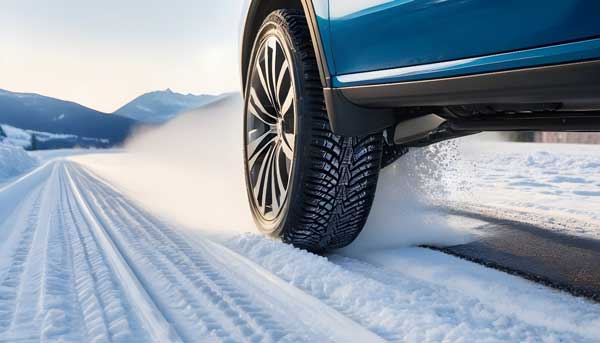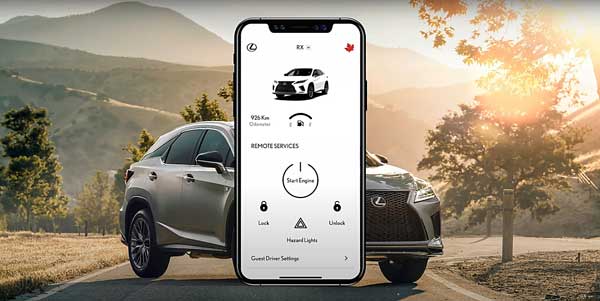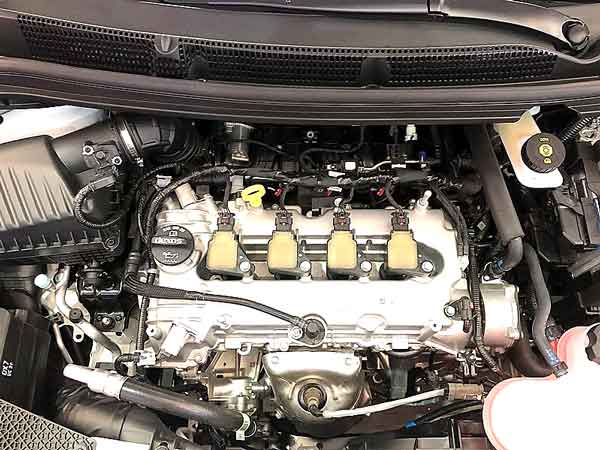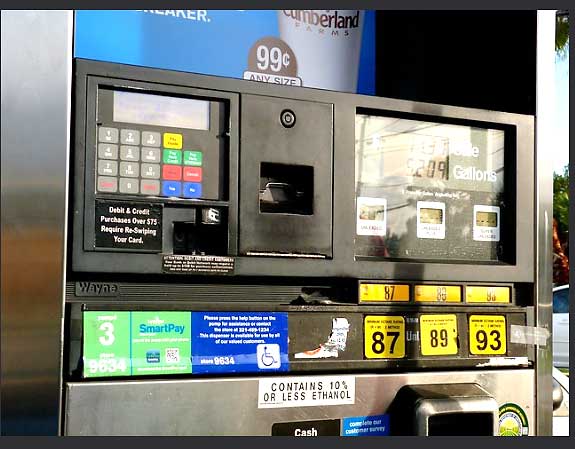Can You Open the Coolant Reservoir When It’s Hot?
What should you do if you suspect your car has a hot engine coolant problem? Can you open the cooling water tank then? Well, let’s dive deeper into this. Your car’s cooling system plays an important role in maintaining the proper engine temperature to prevent overheating.
In this system, there is a component called a coolant reservoir, also known as an overflow tank or expansion tank. This reservoir serves as a reservoir for any excess coolant and helps regulate the pressure in the cooling system.
Now that you suspect a coolant problem while your engine is still warm, it’s important to treat the situation with caution. Opening the coolant reservoir immediately after driving can be dangerous due to high pressure and temperature.
It is recommended that you pre-cool the engine before attempting to inspect or add coolant to the system. These precautionary steps will help keep you safe and prevent potential problems.
Understanding the Coolant Reservoir:
In most cars, you will find a visible plastic container called the coolant reservoir mounted near the radiator. Its purpose is to allow you to check the coolant level without having to open the hot radiator directly, avoiding potential hazards. The reservoir acts as an important containment zone, containing any excess steam that expands due to engine heat.
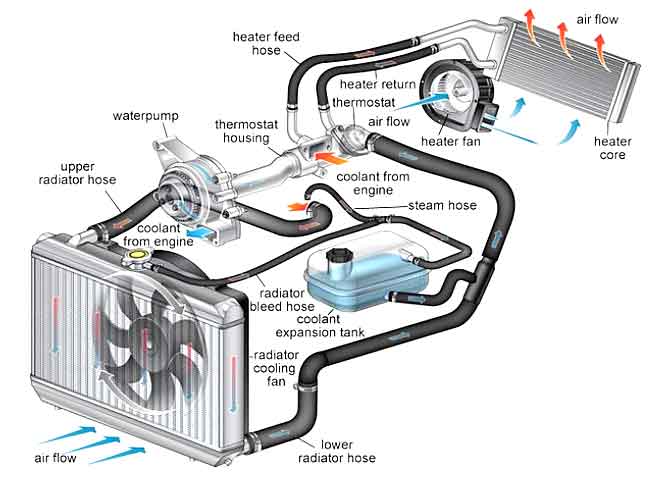
Photo: coolant reservoir and cooling system of a car
As the engine temperature drops, the coolant in the reservoir is drawn back into the radiator, providing a constant and safe level of coolant. This system helps maintain engine temperature and protects against overheating.
It is important to keep an eye on the coolant to ensure that your car’s cooling system is working properly and to avoid the possibility of engine failure due to overheating. Maintaining and maintaining the proper coolant level on a regular basis is essential to the longevity and performance of your vehicle.
Safety First:
Put your safety first before attempting to open the coolant or storage, or do any maintenance work on your car.
- Ensuring that the engine is adequately cooled is paramount to prevent possible burns or injuries.
- Wait until the engine is warm to drive and the temperature gauge on the dashboard shows a reading at or near normal Take necessary precautions If you open the coolant reservoir or service your vehicle, it can be dangerous not to cool the engine properly. Exposure to a hot engine can cause severe burns or injury to others.
- So be patient and careful while waiting for the engine to cool down more. A reliable indicator of engine temperature is the thermometer on the dashboard.
- Check it carefully and make sure it shows a reading at or near the right range before doing any maintenance work.
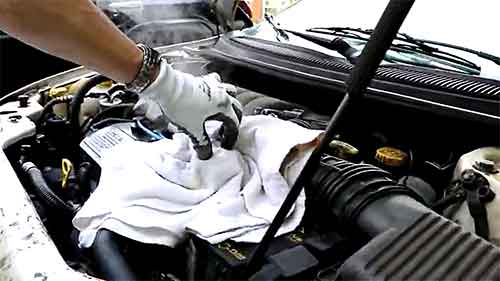
Photo: Safely opening coolant reservoir
By putting your safety first, you can avoid potential accidents and keep yourself out of harm’s way by making these important moves.
Visual Inspection:
To be safe, keep a close eye on the coolant compartment and visually inspect it.
- Look out for any obvious signs of leaks, cracks, or damage to the pool structure.
- In addition, it is important to check the condition of the coolant. You can do this by pointing to the “minimum” and “maximum” marks along the pools. The coolant rate should fall within this range. If you notice that the coolant level is less than the minimum mark, it could indicate a possible problem with the cooling system that needs immediate attention.
- Maintaining the coolant reservoir is essential to keeping your vehicle running smoothly. By paying close attention to leaks, cracks, or visible signs of damage, you can identify potential problems and address them before they become serious.
- Additionally, maintaining the cooling system keeps the engine cool, preventing overheating and other related problems.
Therefore, in order to ensure the integrity of the coolant reservoir, it is important to inspect it regularly to keep your car’s cooling system running smoothly.
Adding Coolant:
If you determine that the coolant is low and it is safe to proceed, you have the option of adding more coolant to the designated reservoir.
- Most coolant systems are equipped with a screw cap or a press-on cap that includes a built-in pressure release system
- In both cases, care must be taken when opening the helmet. It is best to do this gradually, to allow any excess pressure to escape before the cap is completely removed.
- It is important to avoid forcing the cap open as hot water spray is dangerous and can cause burns.
- When adding coolant, make sure the engine is cool enough to avoid accidental contact with hot surfaces.
- It is recommended that the vehicle manual be consulted for specific instructions on the type of coolant and the correct mixture as needed
- In addition, remember to properly dispose of any coolant you dispose of, as it is toxic and harmful to the environment.

Regular inspection and maintenance of your car’s coolant helps keep it running smoothly and helps prevent overheating problems.
Topping up the Coolant:
Following these steps will keep your engine running smoothly and protect it from overheating, especially in harsh weather.
- To properly add coolant to your vehicle, be sure to prepare a mixture of water and antifreeze according to the manufacturer’s recommended amount.
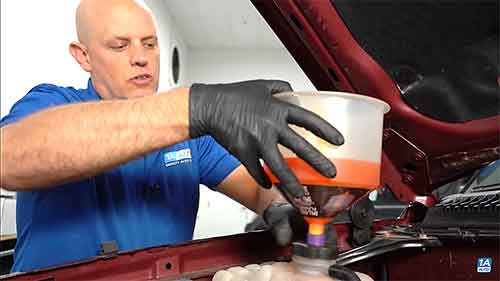
Photo: Adding coolant
- Be careful not to overfill the reservoir with coolant pouring the mixture gently over it.
- It is important to add coolant slowly, allowing enough time for any trapped dangerous gases to escape.
- This will help ensure that your vehicle’s cooling system is working properly and prevent possible damage due to incorrect cooling rates.
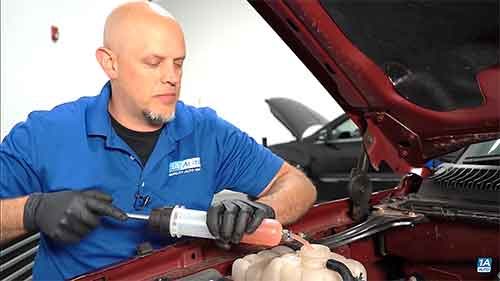
Photo: Taking out extra coolant
Remember to check your vehicle’s manual for the correct coolant mixture and other specific instructions.
Seeking Professional Help:
Adding a water cooler to the reservoir is a relatively simple task, but it’s important to keep in mind that a low coolant can mean an issue that you most likely find yourself in situation one that requires frequent coolant refills or it is wise to seek the advice of an experienced mechanic if you suspect a more serious problem
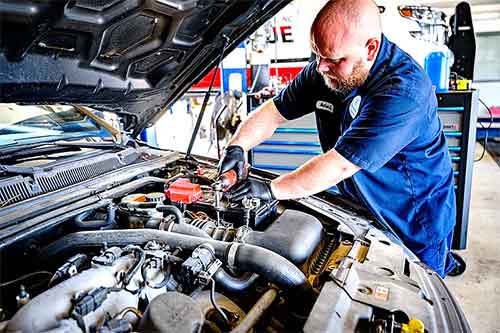
Consulting with a professional technician is beneficial as they have the knowledge and experience necessary to accurately diagnose and correct any faults in the cooling system. Don’t hesitate to rely on their expertise to ensure your car’s cooling system is working properly.
By doing so, you can prevent any potential damage or complications along the way and have a smooth, worry-free ride.
Prioritizing Safety for a Reliable Cooling System:
It is important to be careful and avoid opening the coolant reservoir when your engine is hot, as this can cause potential hazards. Your safety should always come first, so it’s important to wait until the engine has cooled down enough before proceeding. Once you ensure a safe temperature, you can visually inspect the pool and add cooling water as needed.
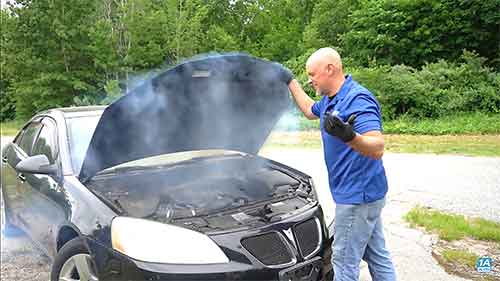
However, if you suspect any ongoing problems with your cooling system, it is highly recommended that you seek professional help. They can properly diagnose the disease and ensure that the problem is properly managed.
It’s important to remember that maintaining an efficient cooling system is essential to the performance and longevity of your vehicle. By taking these precautions and seeking professional help when needed, you can ensure a safe and reliable driving experience.

